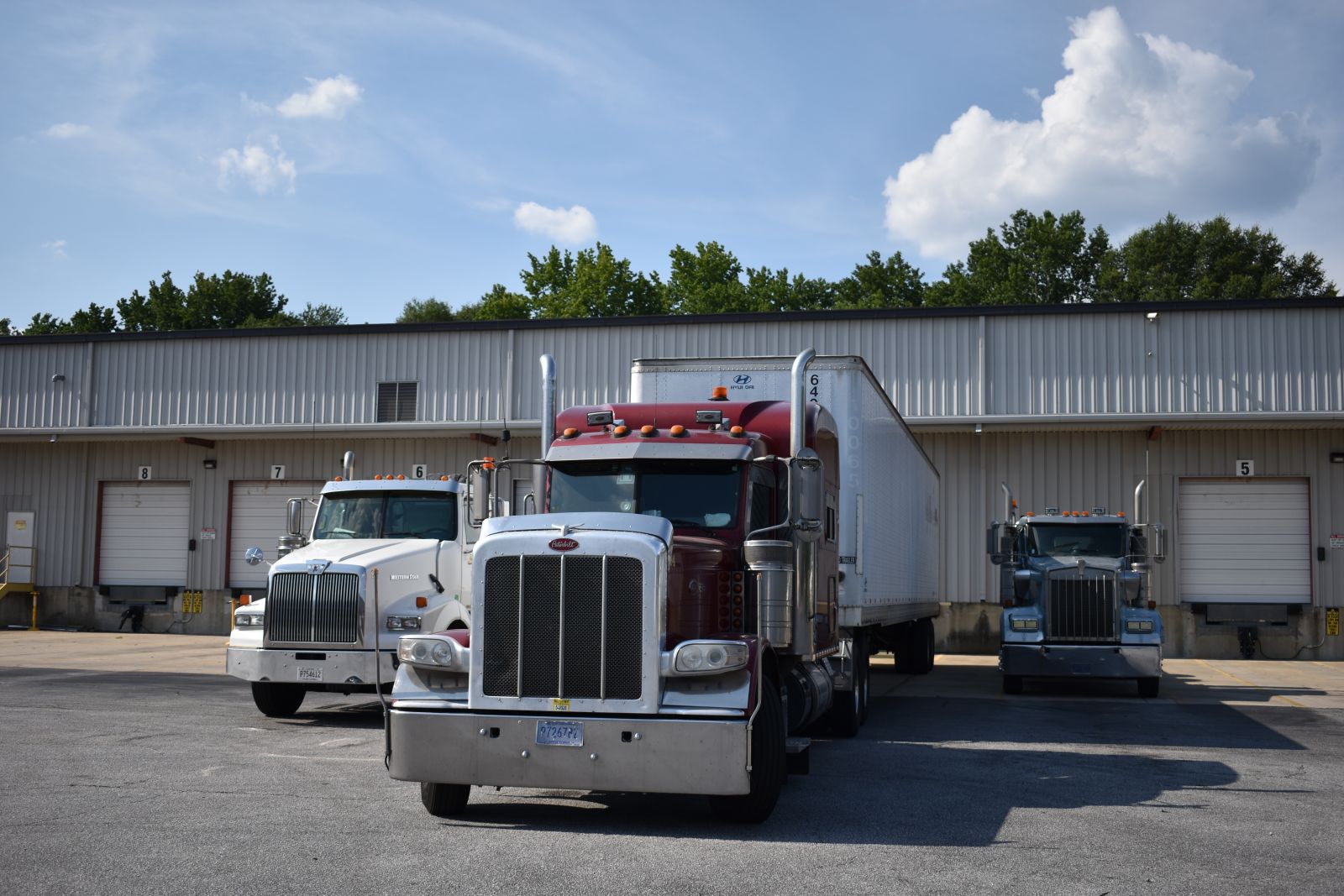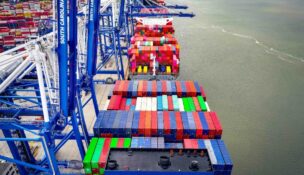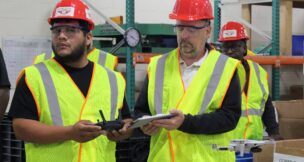Rollout of trucking ELD regulations could regionalize supply chains
Molly Hulsey //August 5, 2020//
 Beyond the chain-link fence cordoning off one of Greer’s only U.S. Foreign-Trade Zones stretches hundreds of square feet of wheels stacked almost to the ceiling, boxes of lubricants in all colors and crates of components used to ready milk for shipping — to name a few items awaiting delivery.
Beyond the chain-link fence cordoning off one of Greer’s only U.S. Foreign-Trade Zones stretches hundreds of square feet of wheels stacked almost to the ceiling, boxes of lubricants in all colors and crates of components used to ready milk for shipping — to name a few items awaiting delivery.
Most have wound their way up to the Inland Port from Charleston. Others have been flown in from a customs station about three miles down the road. But no matter how these products reached Swafford Transport and Warehousing, Dusty Locke, vice president of the operation, is grateful – now more than ever – to have storage capabilities alongside a trucking fleet.
The COVID-19 pandemic may have brought with it a host of complications for the logistics and transportation sector, as well as an urge to regionalize operations, but according to Locke, national regulations — and state-specific regulation disparities — in the trucking industry over the past few years had already begun to reconfigure and reconnect supply chain nodes due to losses fielded by the industry.
“The intent is always pure. It’s always good, and you think it’s going to be helpful,” Locke said, about regulatory laws on the trucking industry. “But if you haven’t lived it and done it, you haven’t come from that business background and you’re just at a 30,000-foot view, this looks like an easy fix. Well, it’s not.”
Predominant snags, he said, are the regulations surrounding electronic devices used to track hours-of-service requirements prescribed by the Federal Motor Carrier Safety Administration.
 The stipulations, mandated by Congress a little under a decade ago under the Moving Ahead for Progress in the 21st Century Act, according to an FMCSA statement, require electronic logging devices to keep tabs on trucker’s 10-hour and 11-hour driving limits instead of relying on paper logs or, in its newest iteration, legacy automatic onboard recording devices.
The stipulations, mandated by Congress a little under a decade ago under the Moving Ahead for Progress in the 21st Century Act, according to an FMCSA statement, require electronic logging devices to keep tabs on trucker’s 10-hour and 11-hour driving limits instead of relying on paper logs or, in its newest iteration, legacy automatic onboard recording devices.
According to existing hour-of-service requirements, drivers must rest in sleeper cabs or go off-duty for at least 30 minutes every nine hours or less, while drivers who have been on-duty for 60 or 70 hours over seven or eight consecutive days must take 35 consecutive hours off before jumping back on the road again, aside from some exemptions, according to the FMCSA site.
Some hours-of-service requirements were temporarily set aside for the delivery of emergency medical supplies this spring.
ELD or AORD installations monitoring these hour-of-service transitions were required by law in 2017, but all fleets were expected to replace AORDs with ELDs, which displays and records a wealth of compliance data compared to the grandfathered AORDs, by December 2019.
“The rule is intended to help create a safer work environment for drivers, and make it easier and faster to accurately track, manage and share RODS (record of duty status),” according to a statement from the FMCSA.
The FMCSA estimates that full implementation of ELDs will result in 1,844 fewer crashes, 562 related injuries and 26 fewer deaths each year, according to a statement on the agency’s site. Data from an April 2020 also shows that the rollout of ELD compliance also brought the percentage of driver inspections with a HOS violation down from 1.19% in December 2017 to .28% in March 2020.
Locke agrees that some of the hour-of-service regulations have been helpful in preventing sleep-induced wrecks, but he also argues that some of the criteria and lack of flexibility has put greater strains on truck drivers to speed to make deadlines. The regulations also priced smaller trucking companies out of the market, he said.
 “There have been more accidents, more speeding tickets, because the drivers, they’ve only got this window. … My driver needs to earn this much and I need to earn this much per hour to cover my costs for the equipment, the payroll and the fuel and I’d said I could do it in 10 (hours). Well, it just became 18 (hours). Now, we just lost money; the driver just lost money, and now he feels that pressure continuously to drive a little faster, get there a little sooner,” Locke said.
“There have been more accidents, more speeding tickets, because the drivers, they’ve only got this window. … My driver needs to earn this much and I need to earn this much per hour to cover my costs for the equipment, the payroll and the fuel and I’d said I could do it in 10 (hours). Well, it just became 18 (hours). Now, we just lost money; the driver just lost money, and now he feels that pressure continuously to drive a little faster, get there a little sooner,” Locke said.
According to a U.S. Department of Transportation study from 2018, the year after ELDs were enforced, large-truck accident-related deaths reached 885 incidents, a .9% increase from the year before. All other traffic fatalities decreased by 2.4%.
Greater speed also puts additional wear and tear on trucking parts. Furthermore, retrofitting a tractor-trailer with new ELD equipment also comes with extensive monetary costs that not all fleets were prepared to shoulder. Locke knows of at least two companies that had to shutter due to the ELD costs.
“It’s a huge expense; it put a lot of smaller operators out of business,” he said, adding that a 1992-tractor with a refurbished engine may have worked well under past requirements but is not electronically compatible with ELDs. At a baseline price, new trucks are more than $200,000.
“They could not afford to comply,” he said.
Swafford was able to adapt existing trucks but compliance still came with a hefty cost of time, sweat and money. When one truck wasn’t compatible because it needed a camera, the company retired it to local runs only.
“We’ve even got a some tractors that we put ELDs in, and it took a lot of work, a lot of work to adapt the wiring harnesses so it can communicate with all the different parts of the truck that it had to,” he said.
Some companies adjust through tag-teaming. On a larger scale, Locke sees that trucking regulations, lifestyle shifts and the supply chain disruptions brought on by the COVID-19 pandemic are all driving increased regionalization of logistics hubs.
Driver turnover is high in the industry, he said, as truckers increasingly want to stick closer to home and families. The “Amazon effect” has also prompted consumers to expect ever shortening delivery times. Lastly, thanks to ELDs and other regulations, the cost of driving beyond the scope of a day’s trip is just not as profitable as it used to be — or even feasible for some companies, he said.
Greer is in a sound spot for the transition, however, especially since the Inland Port was established. Distribution centers in Charleston may have lost out with the construction of the Greer port due to its location outside of a one-day trucking radius for many major cities, Locke said.
Not so for Swafford. And with costs come changes and with changes, new opportunities.
“We are within one day of something like 55% of the population of the United States right here in Greer. You could drive eight hours and you could make it to Nashville, Louisville, Birmingham, Montgomery, Tallahassee, Jacksonville, D.C.,” he said.
This story originally appeared in the July 27, 2020, print edition of the GSA Business Report.
t















